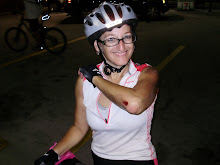Once a month, the City of Orlando sponsors a two hour Moonlight History Stroll of Greenwood Cemetery. Located within the city limits of Orlando, Greenwood is about 75 minutes from the New Tampa area via I4 East to Exit 82A, State Road 408E to Exit 11B. Don Price, the General Manager of the cemetery, guides you on a four mile walk, visiting the graves of some of Orlando’s most notable and/or notorious citizens. While this is not a ghost tour, it is a fascinating perspective on the checkered history of Orlando, its politics, segregation and the economic growth and societal changes of the past century.
Chartered in 1880, Orlando’s picturesque Greenwood Cemetery embraces more than 100 acres of grass, trees and tombstones. Even after losing 140 trees during the 2004 hurricane season, it is a cool, shaded (and shady!) place to spend an afternoon-or an evening. Despite more than 60,000 interments to date, including transfers from other cemeteries in the area which were closed by local ordinance, it is open, viable and somehow “always has room for one more.”
Meeting at the main entrance to the cemetery, Price begins with an overview of what you’ll see and learn on your walk. He’s an expert on local history, and what he doesn’t know, he makes up as he goes along. In addition to commercial film studios, Valencia Community College, UCF and Full Sail film programs all use Greenwood for their student projects. According to Price, not only were the movies “The Way Back Home” and “Unconscious” filmed at Greenwood, but every movie ever made, too, and he personally had either a walk-on or speaking parts in all of them. Determining precisely when and what he is pulling everyone’s leg about is just part of the fun.
Explaining the physical layout of the cemetery, the significance of the four gates, the impact of State Road 408 abutting the north side of the cemetery and the various sections is only the beginning. A veritable who’s who of historic and present-day Orlando citizens are laid to rest in Greenwood. It seems every major street and neighborhood in Orlando has a corresponding grave and tall tale, including Parramore, Bumby, Leu, Mizell and Boone.
Indeed, it is ironic that Parramore Avenue and the poor, overwhelmingly African-American neighborhood of Parramore were named in honor of a Captain of the Confederate Army, James Parramore. Harry Leu bought the Mizell estate, now known as Harry P. Leu Gardens, in the Winter Park area of Orange County. Cassius Boone, a tax collector and owner of the first hotel in Orlando, has a high school named after him. Joseph Bumby built a large Victorian building across from his hardware store, neither of which is located on Bumby Avenue.
There are mausoleums, many monuments of granite and a few wood markers. Some of the family monuments and mausoleums tell sad tales of infant mortality, childbed fever, and widowhood, as is true of all cemeteries.
Racism is always ugly and to see it in a cemetery is shocking to many. Jim Crow laws even extend to the grave and the cemetery was not completely desegregated until Congress passed the Civil Rights Act of 1964. Part of the earlier push to desegregate Greenwood was made by various veterans’ groups. Soldiers from both sides of the Civil War are buried there, as are veterans of the Spanish-American War and both World Wars. Men who have served together, defending our country, were not about to be separated in death. Today, it is hard to imagine people being sorted and, to paraphrase Rev. Martin Luther King, Jr., “judged by the color of their skin [not] by the content of their character." Yet this was not uncommon in the early years of our nation. The Ku Klux Klan was not the laughing stock it is today. The Ocoee Massacre of 1920 was one result of this mindset.
On Nov 2, 1920, in Ocoee, located in northwest Orange County, July Perry and his friend, Mose Norman, both black, tried to vote. Judge John Cheney, who had helped many African-Americans register to vote, encouraged them to return to the polls. A former Chief of Police of Orlando, Sam Salisbury, led a posse to arrest Mr. Perry and Mr. Mose. Salisbury was shot by an undetermined assailant and a black-white riot ensued, leaving many dead. The 495 black residents of Ocoee fled, and it remained an all-white town for over 65 years. Both July Perry and Judge Cheney are buried in Greenwood.
Price also explains how and why the ‘residents’ of other cemeteries were moved to Greenwood. He recounts the arch-rivalry between Elijah Hand, who owned a funeral home and his son, who opened a rival funeral parlor across the street. Price explains what it means to be buried on higher ground, at the midpoint of a section or near one of the gates. Even in death, rivalry and politics are a pre-eminent part of the Orlando character.
Greenwood Cemetery is located at 1603 Greenwood St. Take I4 east to Exit 82A, State Road 408 East. Get off at exit 11B Mills Ave. For more information, call 407-246-2616 or visit their website at http://www.greenwood cemetery.net/index.htm. Tours will be held on Jan 25, Feb 22 and March 21 from 9 to 11 pm and reservations are required. There is no charge, although donations to defray the cost of replacing the lost trees are accepted.
For more information on the ‘residents’ of Greenwood, go to http://www.cfhf.net/orlando/people/index2.htm. The Ocoee Massacre is covered in detail at http://iml.jou.ufl.edu/projects/fall01/white/
Published on January 25, 2008. Volume 16, issue 2.
Subscribe to:
Post Comments (Atom)


No comments:
Post a Comment